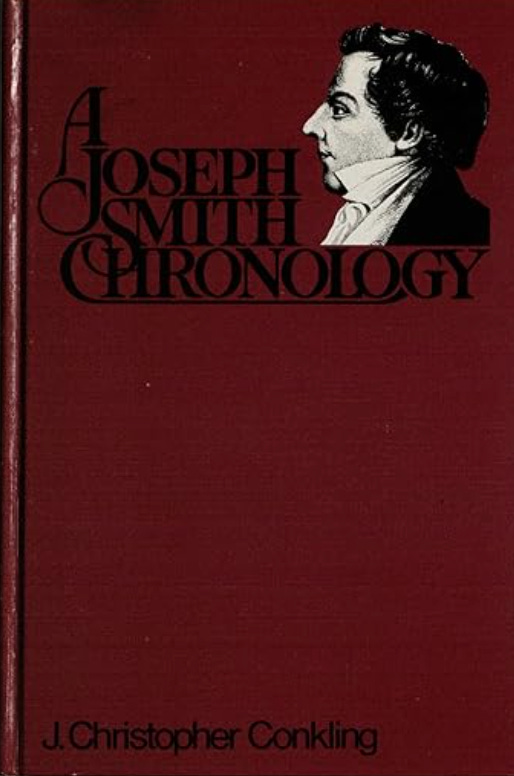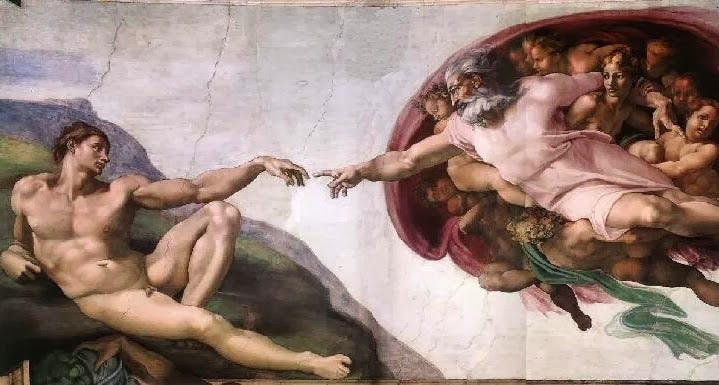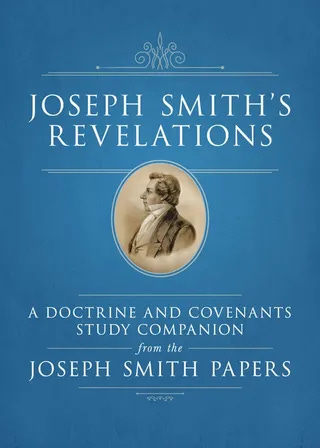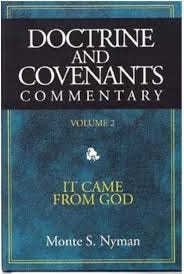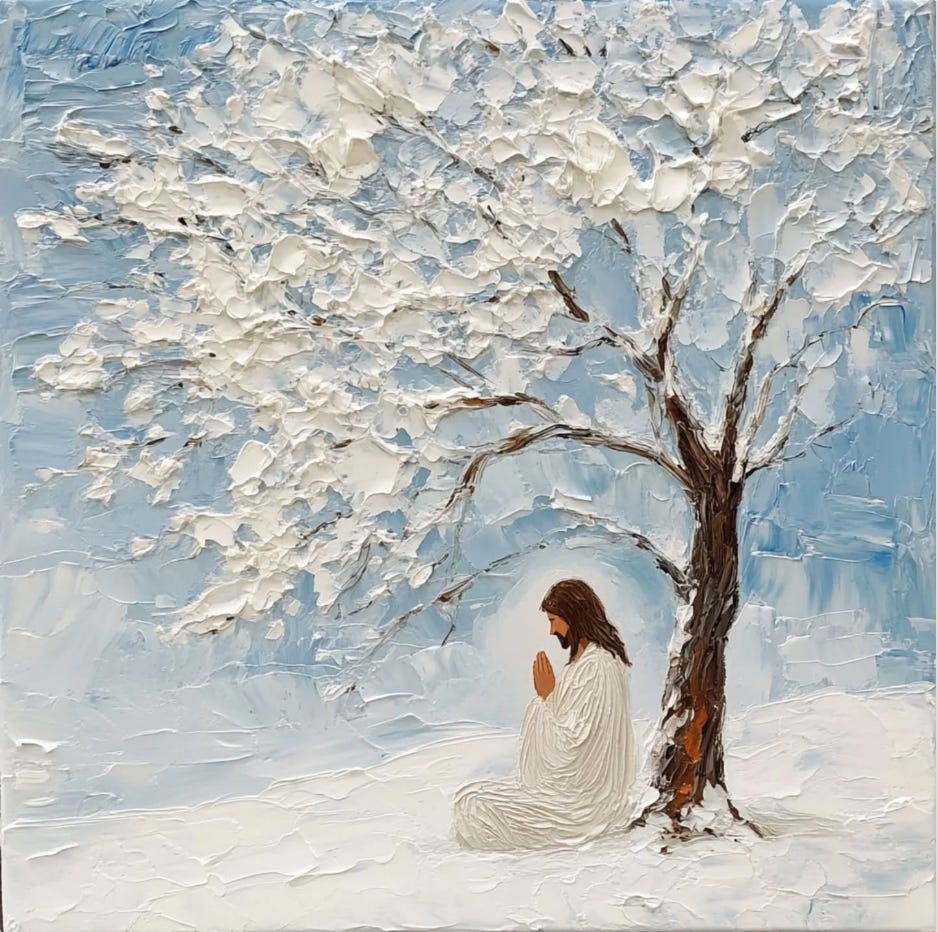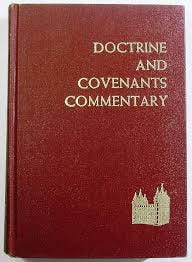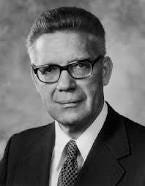Narrowing the Yawning Gap between Creator and Creation
Historical Background for Doctrine and Covenants Section 93
What is the historical background for Doctrine and Covenants Section 93?
In his book A Joseph Smith Chronology, J. Christopher Conkling shares the following timeline leading up to this revelation:
Mar. 18, 1833
The School of the Prophets is held with great joy. Sidney Rigdon and Frederick G. Williams are ordained by Joseph to be members of the First Presidency. This is the first official organization of the First Presidency since the Church was restored. The sacrament is passed and Joseph promises that the pure in heart will see a heavenly vision; many do.
Apr. 1833
The School of the Prophets closes until fall.
Apr. 6, 1833
In Jackson County, Missouri, about 80 Saints gather at the ferry on the Big Blue River on the Jackson County border line to celebrate and worship. They rejoice in the fact that it is the third anniversary of the organization of the Church and 1800 years since the day Christ died. This is the first time the birth of the Church is celebrated. They also discuss, and publish in the Star, the signs of the last days, including the fact that 60 million people have died of the Asiatic cholera in the past 15 years.
Apr. 13, 1833
Joseph answers a letter to Brother Jared Carter stating that “it is contrary to the economy of God for any member of the Church … to receive instructions for those in authority, higher than themselves.” (HC 1:338)
Apr. 18, 1833
A mob of 300 “old settlers” gathers at Independence to decide on plans to destroy or expel the Mormons from Jackson County. After they spend all day trying to decide on various plans, their liquor gets the worst of them and they break up in a “Missouri row.” These “old settlers,” largely from the southern states, came to Jackson County before the Saints, and could not move on because anything west of Missouri had been designated by President Jackson as Indian territory. They watched with some resentment as ever-increasing numbers of the religiously oriented northerners flocked into Jackson County claiming that God had given the country exclusively to them. Acts of violence began as early as the Spring of 1832, when the homes of some Saints were stoned and windows broken. In the fall of 1832, some haystacks were burned, houses shot into, and people insulted; and was recently as February 20, a mob of 50 or 60 men armed with whips and guns attacked at least one household. The group on this date constitutes the first organized resistance to the Mormons in Missouri.
Apr. 21, 1833
Joseph writes to the brethren in Zion, telling them not to print any of the new translation of the Bible in the Star, that it will be printed in a volume by itself, and the New Testament and Book of Mormon will be bound together in one volume.
Apr. 30, 1833
A conference of high priests is held in the schoolroom in Kirtland, and various business is attended to.
May 6, 1833
On this date Joseph receives D&C 93. He also received D&C 94. (pp. 40-41)
In his book The Revelations of the Prophet Joseph Smith, Lyndon W. Cook sheds more light on the historical background for this section:
Date. 6 May 1833.
Place. Kirtland, Geauga County, Ohio.
Historical Note. The inspired translation of the New Testament was temporarily completed on 2 February 1833, but work on the Old Testament continued until 2 July 1833. Verse 53 of section 93 directed the Prophet to “hasten” the translation of the scriptures. This revelation is of major doctrinal importance. The headnote of section 93 in the 1921 edition of the Doctrine and Covenants (and all subsequent reprints, 1921-1980) suggests that the text of the revelation contains a portion of the record of John the Apostle. Both John Taylor and Orson Pratt believed the record to be that of John the Baptist.
Publication Note. Section 93 was first published as section 82 in the 1835 edition of the Doctrine and Covenants. (pp. 194-195)
In his chapter “‘Man Was Also in the Beginning with God,’” in Revelations in Context, Matthew McBride sheds even more light on the historical background for this section:
From late January until April 1833, Joseph Smith and 15 to 20 other men attended the School of the Prophets in Newel K. Whitney’s store in Kirtland, Ohio. In their meetings, they sang, prayed, studied a variety of subjects from the mundane to the sacred, and exercised spiritual gifts. During one of these sessions, held on February 27—the same day the Word of Wisdom was revealed—David W. Patten was moved by the Holy Ghost to sing a hymn in an unknown tongue. Someone present, perhaps Sidney Rigdon, interpreted Patten’s hymn for the others. The hymn was about Enoch’s vision as found in Joseph Smith’s revision of Genesis.1
Enoch’s vision was probably familiar to most of the men in the school. Penned about two years earlier and published in the Evening and Morning Star (an early Church newspaper) in August 1832, the vision gave a grand overview of human history—in the words of Patten’s interpreted hymn, Enoch was shown “what had passed and then was and is present and to come.”2 The vision also gave Church members one of the earliest glimpses of the idea of a premortal existence.3 “I made the world, and men before they were in the flesh,” the Lord told the ancient prophet (Moses 6:51). The interpretation of the hymn given in the schoolroom echoed the revealed text: “He saw the time when Adam his father was made and he saw that he was in eternity before a grain of dust in the ballance was weighed.”4
Joseph Smith’s revisions of the Bible, including the vision of Enoch, contained profound ideas about premortal life and humankind’s relationship to the divine. But they were only hinted at, not explained in detail. We can sense in the interpreted hymn the excitement these early members felt as they contemplated what these hints might mean. But we can only guess what questions these hints may have planted in the minds of Joseph Smith and his companions in the school.
On May 6, a few weeks after the school adjourned for the warm season, Joseph Smith received a revelation giving further details about a premortal existence. Now found in Doctrine and Covenants 93, the revelation departed from traditional Christian ideas about the nature of humankind, opening startling new vistas on our premortal past, our future potential, and our relationship to God.
Since the fifth century, Christian orthodoxy had imposed an almost impassable gulf between the Creator and His creations.5 Humankind, Christians came to believe, was created from nothing. God was not a craftsman who refashioned existing materials but wholly different and apart from His creation—mysterious and unknowable. The Bible’s parent-child description of God’s relationship to us was understood largely as a metaphor instead of a literal kinship. To suggest otherwise, in the estimation of most Christian thinkers, blasphemously lessened God or dangerously elevated humankind.
The May 6 revelation was bold and new, yet also ancient and familiar. As with so many of Joseph Smith’s revelations, it recovered lost truths that were apparently known to biblical figures, in this case the Apostle John. It declared that as Christ “was in the begining with the father,” so “man was also in the begining with God.” It dismissed the long-held belief in creation out of nothing: “Inteligence or the Light of truth was not created or made neither indeed can be.”6
The revelation provided additional truth about God and human nature. It echoed both the text of the Book of Mormon and David Patten’s hymn by defining truth as “knowledge of things as they are and as they were and as they are to come.” These insights into past, present, and future were given “that you may understand and know how to worship and know what you worship.”7 The revelation dealt in particular with God’s past and humanity’s potentially glorious future. Jesus Christ, Joseph was told, had progressed to become like His Father. He “received not of the fulness at the first” but “continued from grace to grace” until He received His Father’s fulness. Likewise, humankind had godlike potential. Men and women who keep God’s commandments “receive grace for grace” until they, too, “shall receive of his fulness and be glorified in me as I am glorified in the father.”8 These flashes of insight into “things as they [really] are” recovered an ancient understanding of the relationship of God and His children and narrowed the yawning gap between Creator and creation that Latter-day Saints had inherited from the Christian tradition.
Joseph Smith spent the rest of his life pondering the implications of these stunning revelatory teachings. Years later in Nauvoo, he gave these truths their most complete expression in his last conference sermon. Echoing the words of the revelation, he taught that men and women were co-eternal with God and could become like Him by “going from a small capacity to a great capacity,” until eventually they dwell “in everlasting burnings.” Speaking with revealed assurance, he taught: “The soul, the mind of man, whare did it come from? The learned says God made it in the beginning, but it is not so. I know better. God has told me so.”9
The best and most thorough explanation of the historical background for this section is found in the online resource Joseph Smith’s Revelations: A Doctrine and Covenants Study Companion from the Joseph Smith Papers, and I also commend it to your attention and careful study.
Monte S. Nyman introduces this section as follows:
Historical Setting: All the Prophet Joseph’s history tells us is “that I [Joseph] received the [Doctrine and Covenants 93]” (HC, 1:343; May 6, 1833). He was probably working on the translation of the Bible. Two months earlier, he was “engaged in the translation of the Old Testament” and had asked about translating the Apocrypha (March 9, 1833; D&C 91; section heading). Although section 76 was given when the Prophet was translating the Testimony of John, in February of 1832, he was apparently working on it again because the opening verses contain several quotations from John. A study of Joseph’s translation work concluded that: “The Prophet went over parts of the Bible more than once and made additional corrections each time.”
- - - - - - -
Introduction
Throughout the history of the world there have been many forms of worship introduced and followed, and many objects of worship. Isaiah describes the conditions of the world just prior to the Second Coming of Christ. He is describing our day, and it is an accurate description. “Their land is also full of idols; they worship the work of their own hands, that which their own fingers have made” (Isaiah 2:8). He is not describing the worshiping of literal idols as in Old Testament times, but is symbolically speaking of material things and human reasoning that is worshiped in our time (see D&C 124:84).
Male and female were created in the image and likeness of the only living and true God, and the only being whom they should worship (see D&C 20:18-19). There is no better way to come to worship God than to follow the instructions of his Only Begotten Son, through whom we worship Him. That instruction is given in section 93. (pp. 217-219)
Smith and Sjodahl introduce this section as follows:
On the 4th of May, 1833, a meeting of High Priests was held at Kirtland, for the purpose of considering ways and means for the building of a house in which to accommodate the School of the Prophets (Sec. 90:6-9). Hyrum Smith, Jared Carter, and Reynolds Cahoon were appointed a committee to obtain subscriptions for that purpose. The Saints were few and far from wealthy, and an undertaking of that kind must have seemed stupendous to them, but the leaders of the Church were men of God, and their faith was of the practical kind, by which mountains are removed. When this important step had been taken, two instructive Revelations were given on the same date.
In this Section our Lord (1) assures the Saints that obedience is the road to glory (1-4); (2) refers to John’s testimony of Him (5-18); (3) instructs them concerning true worship (19-20); (4) teaches pre-existence (21-29); (5) the eternity of truth (30-32) and (6) of the elements (33-37); (7) give admonitions concerning children (38-50); and (8) closes with special instructions (51-53). (pp. 587-588)
Bruce R. McConkie’s introduction to this section is short and sweet:
Revelation given through Joseph Smith the Prophet, at Kirtland, Ohio, May 6, 1833.
With this historical background in mind, in the following posts we’ll begin to examine and appreciate the revelation itself.




